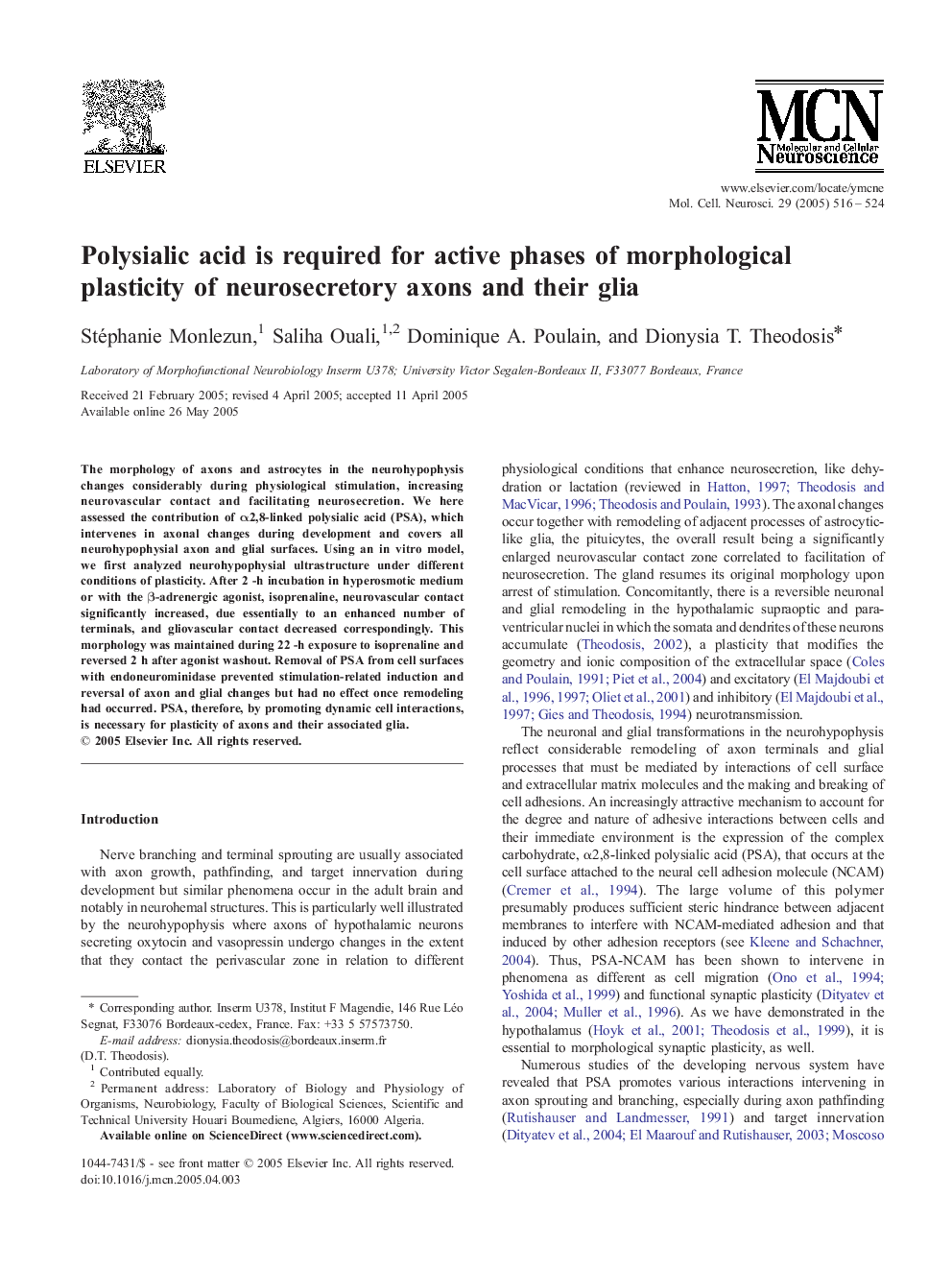| Article ID | Journal | Published Year | Pages | File Type |
|---|---|---|---|---|
| 10956854 | Molecular and Cellular Neuroscience | 2005 | 9 Pages |
Abstract
The morphology of axons and astrocytes in the neurohypophysis changes considerably during physiological stimulation, increasing neurovascular contact and facilitating neurosecretion. We here assessed the contribution of α2,8-linked polysialic acid (PSA), which intervenes in axonal changes during development and covers all neurohypophysial axon and glial surfaces. Using an in vitro model, we first analyzed neurohypophysial ultrastructure under different conditions of plasticity. After 2 h incubation in hyperosmotic medium or with the β-adrenergic agonist, isoprenaline, neurovascular contact significantly increased, due essentially to an enhanced number of terminals, and gliovascular contact decreased correspondingly. This morphology was maintained during 22 h exposure to isoprenaline and reversed 2 h after agonist washout. Removal of PSA from cell surfaces with endoneurominidase prevented stimulation-related induction and reversal of axon and glial changes but had no effect once remodeling had occurred. PSA, therefore, by promoting dynamic cell interactions, is necessary for plasticity of axons and their associated glia.
Related Topics
Life Sciences
Biochemistry, Genetics and Molecular Biology
Cell Biology
Authors
Stéphanie Monlezun, Saliha Ouali, Dominique A. Poulain, Dionysia T. Theodosis,
